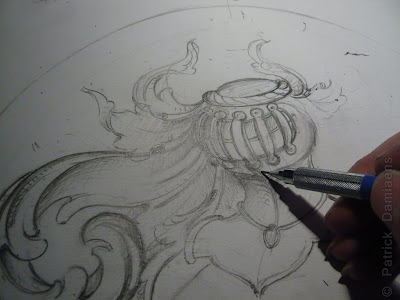Carved in Wood
“Heraldic wood carving”
On November 22nd 2009 I posted my
first educational wood carving video on YouTube. The idea behind my YouTubechannel was to acquaint people with the art
of wood carving, traditional craftsmanship, and to highlight the wide and
diverse range of applications of ornamental woodcarving.
At first I was a bit skeptical about promoting
my work on YouTube. I wasn’t immediately convinced about the use and added
value of this “new medium”.
However, gradually this YouTube channel gained more
and more popularity across the globe.
Indeed, YouTube has proven to be a
valuable tool, which has enabled me to familiarize people with the métier of wood carving, and the
complexity of artisanal craftsmanship.
In August 2013 my first YouTube video reached
100.000 views, and needless to say I am very proud of that. As the contents of
my uploads are strictly of a explorative or educational, rather than of a
senseless mainstream nature, I am convinced that reaching 100.000 views is
quite an recognition.
This particular video shows the various stages
of carving a Family Crest in limewood. I truly enjoy the feedback, and going
through the viewer comments.
Thanks!
Thanks!
 |
| Heraldic woodcarver Patrick Damiaens |
100 000 views on Youtube
Heraldic Woodcarving
 |
| https://www.patrickdamiaens.info |































